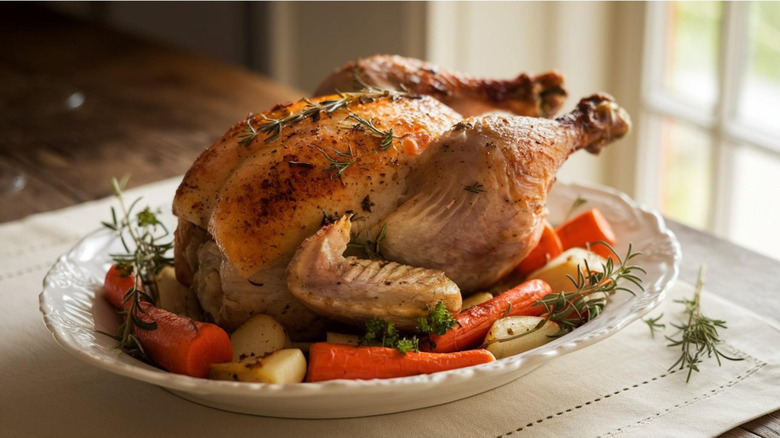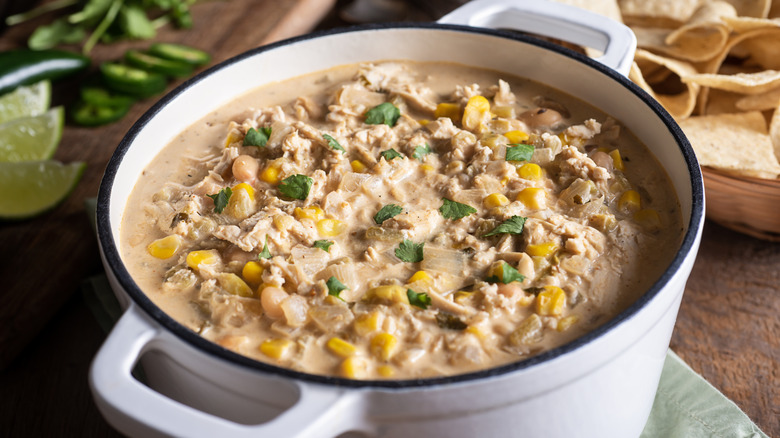Why It Pays To Buy And Cook Chickens Whole
Grocery store butchers have made buying chicken easier than ever. Whether you need boneless, skinless chicken thighs for Japanese twice-fried chicken or drumsticks for air fryer Parmesan chicken, you can find it cleaned, portioned, and packaged at your local market. But there is a convincing argument to be made about what is lost in the name of convenience, most notably being your money.
Price stands above all the reasons why it's better to buy and roast a whole bird as opposed to neatly parceled parts. On average, a whole 6 to 7 pound chicken is nearly $5 less per pound than three boneless, skinless breasts. This doesn't even take into account that with a whole chicken, you also get two thighs, two wings, and two drumsticks — not to mention the chicken stock you can make from the gizzards and carcass. But what might be most important are the valuable cooking lessons you miss out on.
What to do with your chicken after you roast it
Once you've completed a basic, but foolproof roast chicken, there are likely leftovers and a whole carcass to deal with. So now what? Well, now everything because the possibilities are endless. You can start by stripping the meat and storing it in an airtight container in the fridge. Then, take the bones, skin, cartilage, and the wrapped gizzards you encountered in the cavity before roasting (if you didn't throw them away), and add some roughly chopped onion, carrots, and celery to make your own chicken stock. After that, the sky's the limit.
Use your freshly made stock and leftover chicken to brew up a bowl of comforting matzo ball soup or a hearty chicken and navy bean chili. You can chop breast and thigh meat for amazing chicken salad sandwiches, or shred it all up for a chicken, mushroom, and winter squash pie. Considering one 4-pound roasted chicken can serve up to six people depending on the appetite, it could be possible to feed your family several lunches or dinners from just one roasted chicken.

